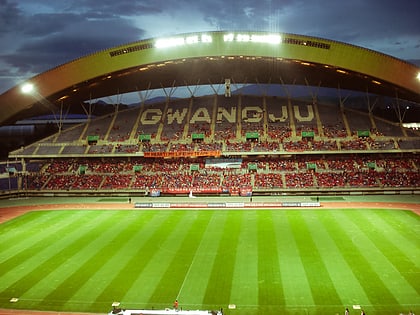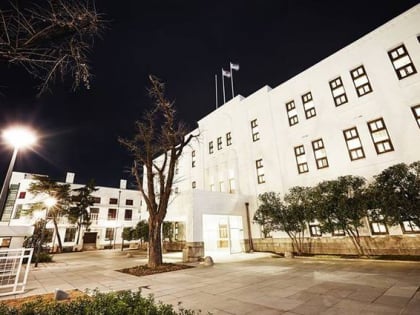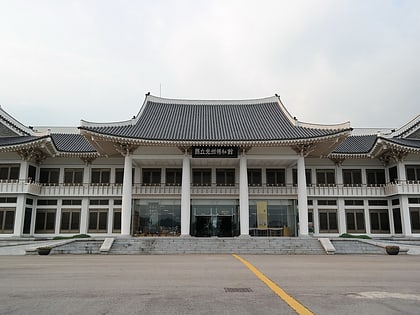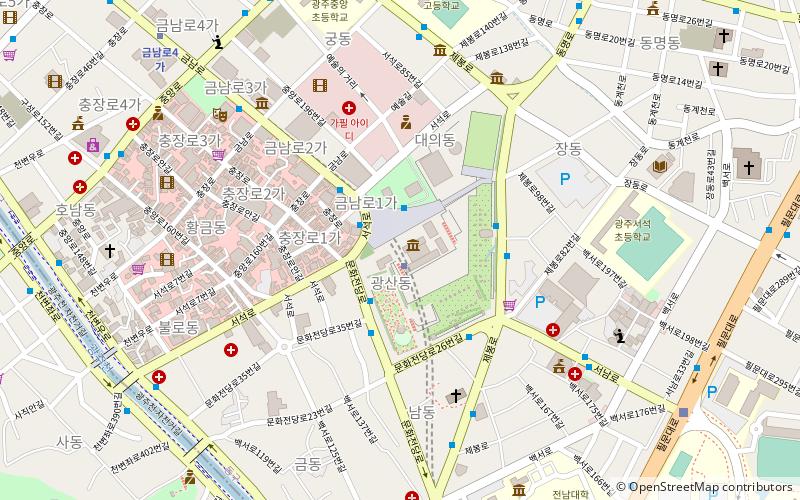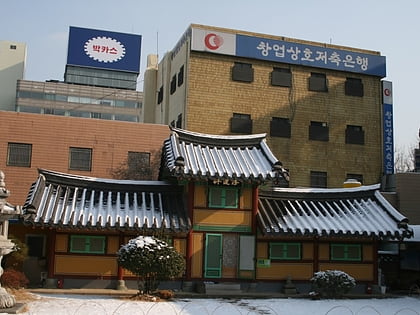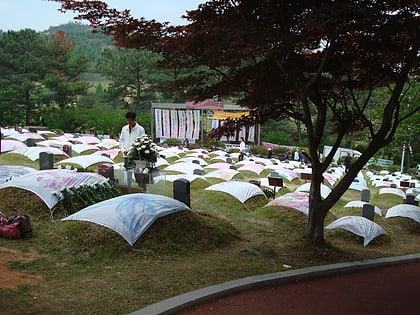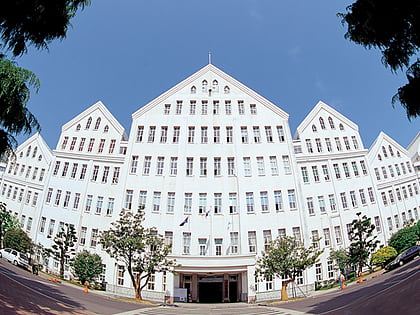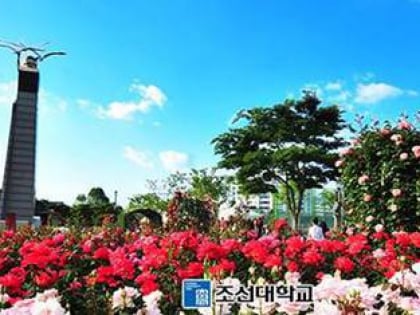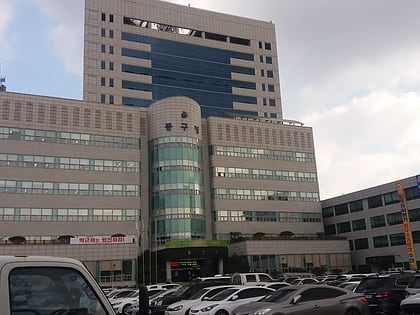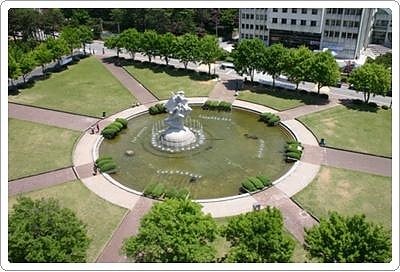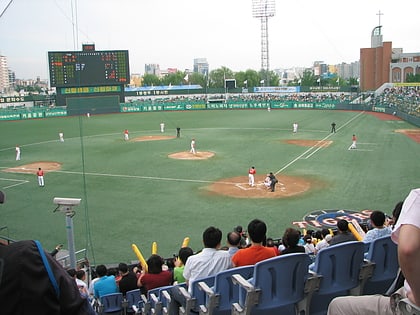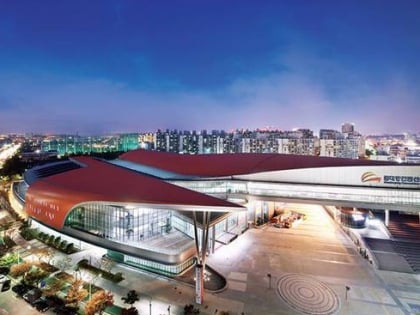Gwangju World Cup Stadium, Gwangju
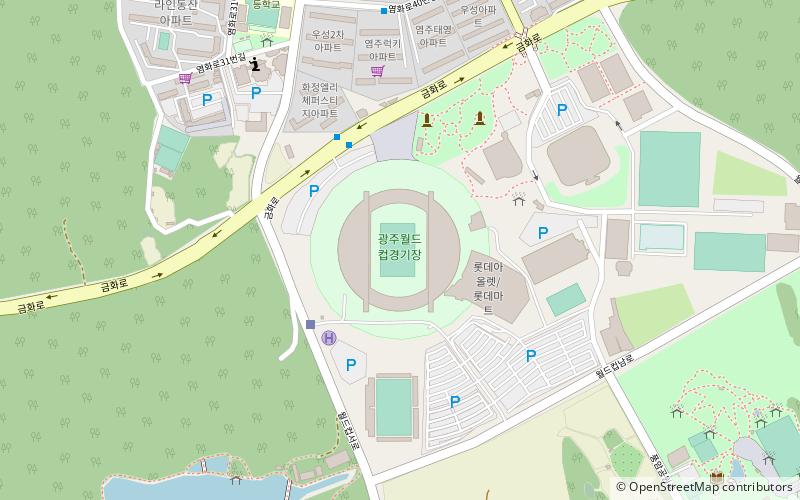

Facts and practical information
The Gwangju World Cup Stadium, an emblematic sports venue nestled in the bustling city of Gwangju, South Korea, is a testament to the country's love for football and its commitment to international sporting events. Constructed with the 2002 FIFA World Cup in mind, this impressive stadium was one of the pivotal locations that hosted the world's most prestigious football tournament.
With a seating capacity of over 40,000 spectators, the Gwangju World Cup Stadium is not only a hub for football matches but also a multi-purpose venue that accommodates various sporting events and cultural activities. Its design is inspired by the traditional Korean hat, Gat, which symbolizes the city's rich cultural heritage intertwined with modern architectural aesthetics.
The stadium boasts state-of-the-art facilities, including expansive seating arrangements, high-quality turf, and advanced lighting systems, ensuring an optimal experience for both players and fans. Since its inauguration, the venue has been the home ground for the Gwangju FC, a professional football club in the K League 1, South Korea's top-tier football league.
Aside from its primary function as a sports venue, the Gwangju World Cup Stadium also serves as a community hub, with its surrounding park area offering a place for relaxation and recreation for the city's residents. The stadium's presence has significantly contributed to the local economy, drawing tourists and sports enthusiasts from around the globe.
Gwangju World Cup Stadium – popular in the area (distance from the attraction)
Nearby attractions include: Asia Culture Center, Gwangju National Museum, Gwangju Castle, Wongaksa.
Frequently Asked Questions (FAQ)
How to get to Gwangju World Cup Stadium by public transport?
Light rail
- World Cup Stadium • Lines: 2 (4 min walk)
- Pungam • Lines: 2 (13 min walk)
Bus
- 금호한국아파트 • Lines: 송암72 (23 min walk)
- 서구문화센터 • Lines: 송암72 (23 min walk)
Metro
- Uncheon • Lines: 1 (38 min walk)
